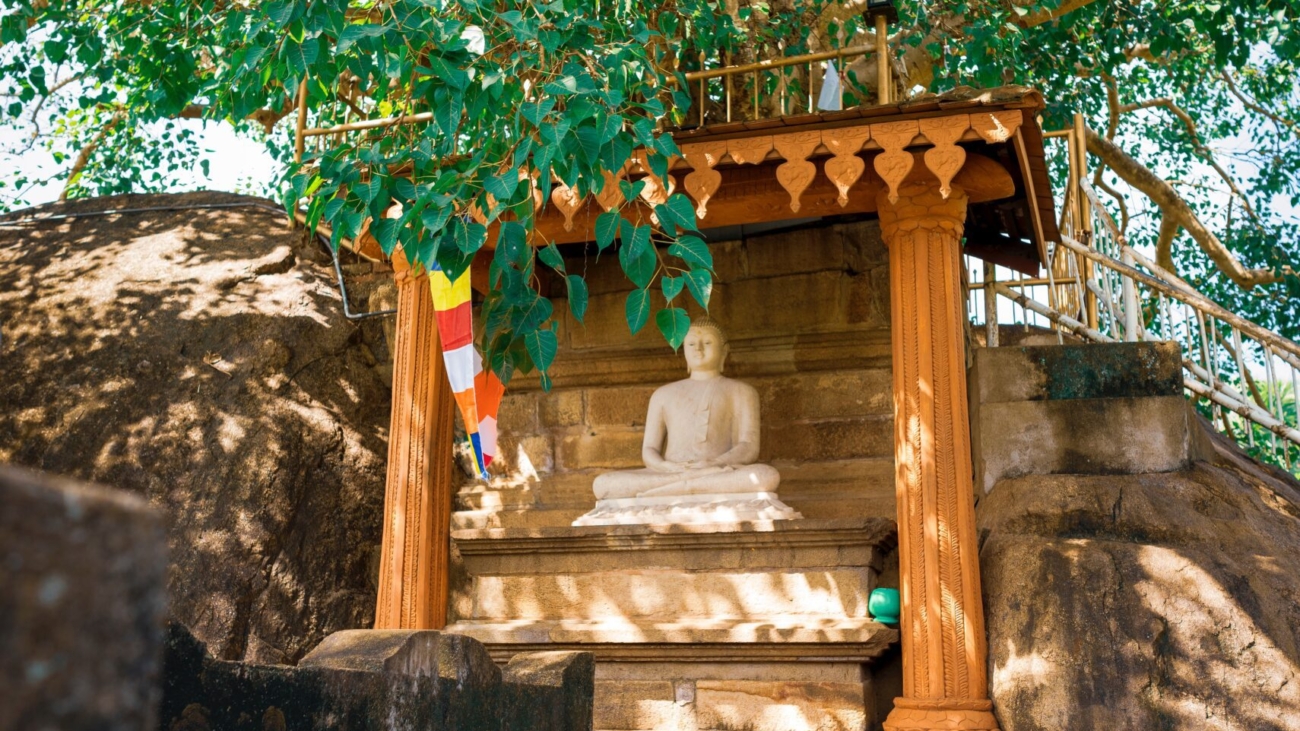Sri Lanka is home to an array of incredible UNESCO heritage sites, and if you’re looking for a quick but meaningful travel experience, then this is the place for you! Join us in our exploration as we look at some of these exceptional monuments, which range from age-old fortresses to beautiful ancient rainforests.
Introduction to Sri Lanka’s UNESCO Heritage Sites
Sri Lanka is home to some of the most incredible UNESCO heritage sites in the world. From ancient temples and ruins to natural wonders, there is something for everyone to enjoy. Here is a quick guide to some of the best UNESCO heritage sites in Sri Lanka: 1. Sigiriya: This ancient fortress is located atop a massive rock column in the central province of Sri Lanka. It was once the capital of an ancient kingdom and features stunning architecture and artwork. 2. Anuradhapura: This ruined city was once the capital of Sri Lanka and is home to some of the oldest Buddhist monuments in the world. 3. Polonnaruwa: Another ancient ruined city, Polonnaruwa was once the second capital of Sri Lanka. It is home to a variety of Hindu and Buddhist temples as well as other historical monuments. 4. Dambulla: This small town is home to one of the largest cave temples in Sri Lanka, which contains over 150 statues of Buddha. 5. Kandy: The last kingdom of Sri Lanka, Kandy is now a popular tourist destination due to its scenic setting and historic landmarks such as the Temple of the Tooth Relic.
Sigiriya Rock Fortress
Sigiriya Rock Fortress is a UNESCO World Heritage Site located in central Sri Lanka. The site consists of an ancient palace complex built atop a massive 200 meter high rock outcrop. The complex includes numerous buildings and artistic features, many of which date back to the 5th century CE when it was first constructed. The Sigiriya Rock Fortress is one of the most iconic and popular tourist destinations in Sri Lanka. It is also one of the country’s most important archaeological sites, with a long and rich history dating back over 1500 years. The Sigiriya Rock Fortress was built by King Kassapa I (r. 477-495 CE) as his royal palace and fortress city. The king sought to create an impregnable stronghold from which he could rule over his vast kingdom with ease and security. To this end, he constructed extensive fortifications around the base of the rock, including a moat, ramparts, and defensive walls up to 20 meters high in places. In addition to its defensive features, the Sigiriya Rock Fortress also contained a sumptuous palace complex complete with all the amenities and luxuries befitting a king. The palace included several large courtyards and halls, along with baths, pools, gardens, and other recreational areas. Artistic features such as Frescoes (wall paintings) and fountains adorned the palace, while an elaborate system of canals and reservoirs supplied water to the complex.
Anuradhapura Sacred City
Listed as a UNESCO World Heritage Site in 1982, Anuradhapura is one of the most ancient capitals in Sri Lanka’s history. The city was founded by King Pandukabhaya in 4th century BC and remained the country’s political capital for over 1,400 years. The ancient city spans over 40 square kilometers and is dotted with numerous ruins of palaces, monasteries, and temples. Among the most notable ruins is the Sri Maha Bodhi tree, which is said to be a direct descendent of the tree under which Buddha attained enlightenment. The Ruwanwelisaya stupa is another must-see, being one of the largest stupas in the world at over 100 meters tall. A visit to Anuradhapura would not be complete without seeing the Abhayagiri Complex, a massive monastic compound containing dozens of temples, shrines, and stupas.
Polonnaruwa Ancient City
The ancient city of Polonnaruwa is a UNESCO World Heritage Site that is packed with incredible history and beautiful architecture. This site was the capital of Sri Lanka from the 11th to the 13th centuries, and it is home to a number of impressive buildings and monuments. One of the most notable sights in Polonnaruwa is the Council Chamber, which was used by the king and his ministers for important meetings. This building is made entirely of stone, and its walls are covered with intricate carvings. The Royal Palace is another must-see, as it is one of the largest buildings in Polonnaruwa and features a stunning blend of Sri Lankan and Indian architecture. The Vatadage is another noteworthy structure, as it is a three-tiered circular platform that was used for ceremonial purposes. This site also has an impressive array of statues, including the Statue of King Parakramabahu, which is one of the largest stone statues in Sri Lanka. Whether you’re interested in history or architecture, Polonnaruwa Ancient City is sure to impress. Plan to spend a few hours exploring this UNESCO World Heritage Site so that you can see all it has to offer!
Gal Vihara, Polonnaruwa
The Gal Vihara at Polonnaruwa is a magnificent temple complex consisting of four large rock sculptures of the Buddha, carved out of a single piece of granite. The statues are life-sized and depict the Buddha in different states: seated in meditation, standing in preaching pose, and lying down in the Parinirvana. The statues are incredibly realistic and lifelike, and the level of detail is amazing. It’s no wonder that the Gal Vihara has been described as “the finest example of Sinhalese sculpture”. The temple complex is located in a serene and peaceful setting, surrounded by lush greenery. It’s the perfect place to unwind and reflect on the Buddha’s teachings.
Sinharaja Forest Reserve
The Sinharaja Forest Reserve is a UNESCO World Heritage Site in Sri Lanka that is home to an incredible variety of flora and fauna. The reserve is located in the southern part of the island and covers an area of 18,889 hectares. It was designated as a World Heritage Site in 1988 and is one of the few remaining tracts of virgin rainforest in Asia. The Sinharaja Forest Reserve is home to an incredible variety of plant and animal life. Over 60% of the trees in the reserve are endemic to Sri Lanka, meaning they can be found nowhere else on Earth. The forest is also home to many rare and endangered species, such as the leopard, elephant, and red-faced malkoha bird. Visitors to the Sinharaja Forest Reserve can explore the forest on foot or by mountain bike. There are several hiking trails through the reserve, and visitors can also arrange for guided tours with local guides who are knowledgeable about the forest’s flora and fauna.
Golden Temple of Dambulla
The Golden Temple of Dambulla is a UNESCO World Heritage Site located in the central province of Sri Lanka. The temple is situated on a rock cliff In this temple, there are five main caves that house over 150 Buddha statues, murals and paintings. These paintings depict scenes from the life of Lord Buddha and his previous births. The largest statue is the 15-meter tall reclining Buddha. The Golden Temple of Dambulla is one of the most popular tourist destinations in Sri Lanka. It is also known as the “Devaraja Viharaya” or the “Cave of the Gods”. The temple complex was built during the 1st century BC by King Valagamba. It was originally used as a shelter for he and his troops during an invasion. The temple was expanded and renovated over the centuries by various rulers including King Nissanka Malla, who added paintings to cave 2 in 1187 AD. The Golden Temple of Dambulla is open daily from 6:00 am to 6:00 pm. Admission is free for residents of Sri Lanka with a valid ID card. For foreign visitors, the admission fee is 500 LKR (approximately 3 USD).
Old Town of Galle and its Fortifications
The Old Town of Galle and its Fortifications are a UNESCO World Heritage Site located in the southern city of Galle on the island of Sri Lanka. The site, which covers 36 hectares, was inscribed on the World Heritage List in 1988. It is one of the best-preserved Dutch Colonial fortifications in Asia and a testimony to the interaction between European colonial architecture and South Asian traditions. The history of Galle goes back to the 2nd century BC when it was known as Gimhathiththa. It served as a major port for trade between the kingdoms of Sri Lanka and India. In 1505, the Portuguese arrived in Galle and began to build a fort. The Dutch took over the fort in 1640 and expanded it over time. The British occupied it from 1796 until 1948 when Sri Lanka regained independence. The Old Town of Galle is an excellent example of a fortified city with a blend of European and South Asian architectural influences. The layout of the streets and buildings within the fort reflect an efficient use of space and defense against invaders. The walls, which are 4 meters thick and 12 meters high, encircle the entire old town. There are four main gates leading into the fort, each guarded by a watchtower. Within the walls are numerous churches, government buildings, private homes, shops, and other structures dating back to different periods of history.
Central Highlands of Sri Lanka
The Central Highlands of Sri Lanka are home to some of the country’s most incredible UNESCO Heritage Sites. This quick guide will help you discover them all! The first site on our list is the Sacred City of Anuradhapura. This city was once the capital of Sri Lanka and is now a World Heritage Site. The ancient ruins and sacred shrines make it a must-see for any visitor to Sri Lanka. Next on our list is the Old Town of Galle and its Fortifications. This site is located in southern Sri Lanka and was founded by the Portuguese in the 16th century. The Dutch then took over the fortifications in 1640 and expanded them. Today, the old town is a well-preserved example of European colonial architecture. If you’re interested in religious sites, then you won’t want to miss out on visiting Kandy. This city is home to the Temple of the Tooth Relic, which houses one of Buddha’s teeth. Every year, pilgrims from all over Sri Lanka and beyond come to pay their respects at this sacred temple. Last but not least, we have Sigiriya. This site is home to an ancient fortress that was built atop a massive rock column in the 5th century AD. Sigiriya is a must-see for anyone interested in Sri Lankan history or architecture.
Conclusion
Sri Lanka’s UNESCO Heritage sites are truly unforgettable, offering a great mix of culture and history. From the impressive ruins of Anuradhapura to the beautiful tea plantations in Hatton, there is something for everyone. If you’re looking to experience these fantastic places first-hand, be sure to visit and explore their fascinating stories and monuments. By doing so, you will gain an appreciation and understanding of Sri Lanka’s rich culture that can only be discovered through visiting its incredible UNESCO Heritage sites!

